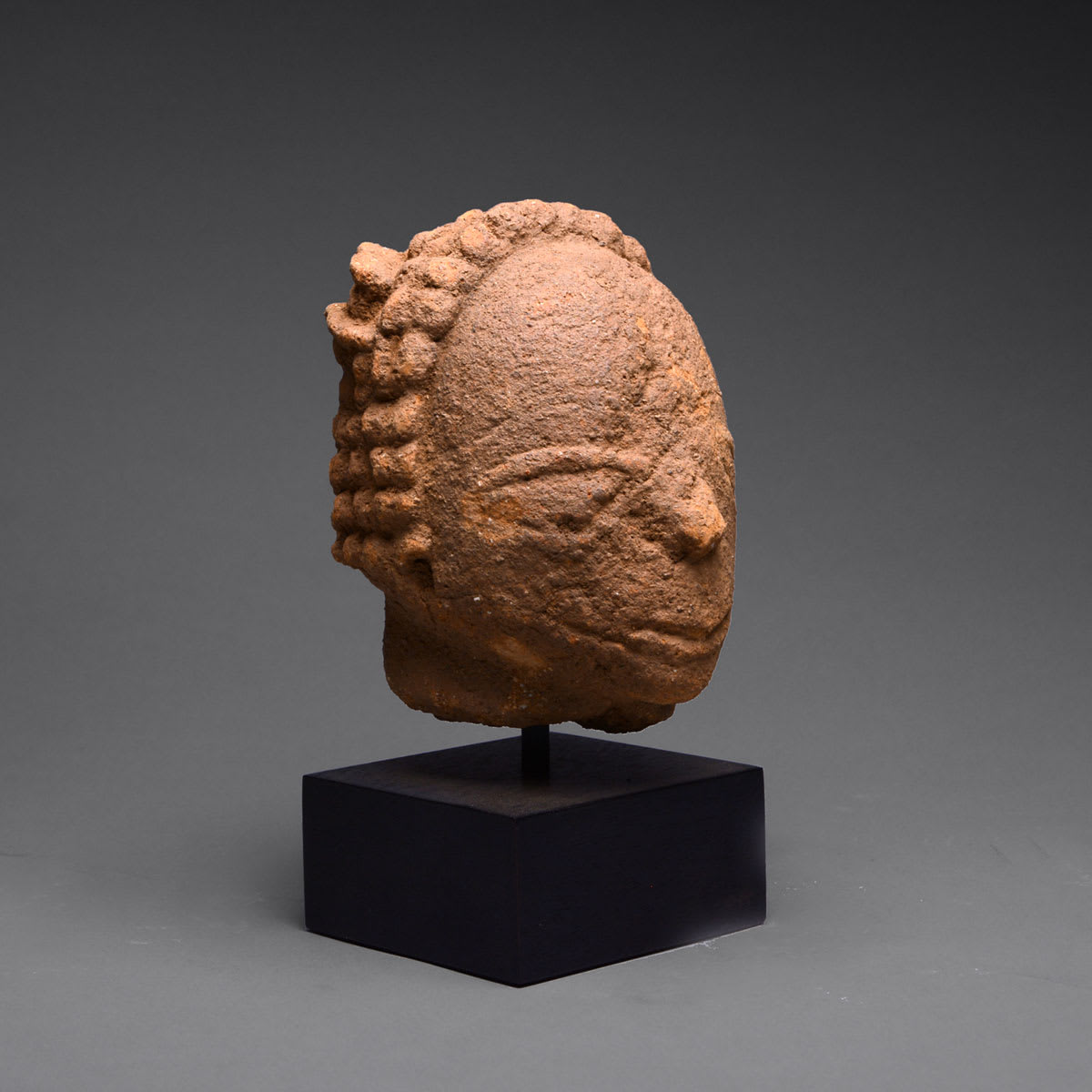Nok Terracotta Head, 200 BCE - 200 CE
Terracotta
height 16.5 cm
height 6 1/2 in
height 6 1/2 in
LSO.574 (GD.118)
Further images
Comparatively little is known of the Nok culture, which is defined largely on the basis of its superb terracotta artworks. Flourishing between 900 BC and 200 AD, the Nok style...
Comparatively little is known of the Nok culture, which is defined largely on the basis of its superb terracotta artworks. Flourishing between 900 BC and 200 AD, the Nok style is in fact an agglomeration of similar traditions that flourished in western and central Nigeria. While there are different stylistic categories, these have little social significance as finds of in-situ Nok material culture are almost unheard-of. Stray archaeological discoveries have confirmed that the Nok culture is in fact a myth – the Nok is a tradition, a style of manufacture that was adopted by different Iron-Age agriculturally- based communities that in fact had widely varying cultures in all other respects. What does unite the trends, however, is a series of outstanding ceramic sculptures, which constitute the most sophisticated and formalised early African artistic tradition outside Egypt. It should be noted that the sophistication of these terracottas makes some scholars believe that they sprang from a hitherto undiscovered ceramic tradition. Technically, they are very unusual because of the manner in which coiled and subtractive sculpting methods were used to capture likenesses. Aesthetically, they are both naturalistic and expressionist, with highly distinctive elongated forms, triangular eyes, pierced pupils/nostrils and elaborate hairstyles. Substyles of the Nok tradition include the Classical Jemaa Style, the Katsina Ala Style (elongated heads) and the Sokoto Style (elongated monobrow foreheads, lending a severe expression to the face) and random variants such as the Herm Statues of Kuchamfa (simplified cylindrical figures topped with normal heads) and the “standard” three-dimensional standing figures, which subscribe to the Jemaa style. The function of the art is unclear, although the care with which they are executed has led some to claim they represent nobility, or perhaps ancestors to which obeisance and sacrifices were offered. The current example is relatively small, with triangular pierced eyes, a retrousse nose, small pursed mouth and an ornate hairstyle arranged in a series of elevated reliefs. Jusging from the styling, it is a fairly late piece that is nearest to the Katsina Ala group, although the ranges of variability in the Nok sub/groups are not fully understood. The piece has been weathered considerably during its long interment, but it remains a characterful and charming piece of an early African art form that has proved to be the foundation of many subsequent masterworks.







